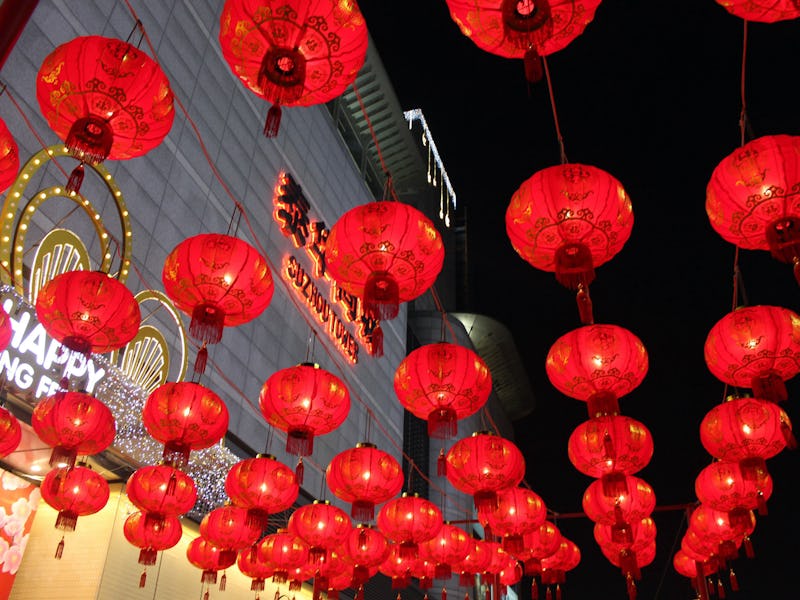Inverse's Guide to the Lunar New Year
Or, to be more precise, the lunisolar new year.

The second new moon after the winter solstice came and went Friday night. As you may or may not know, this milestone marks the new year on the Chinese lunisolar calendar. This calendar, which China adopted in 104 BCE, combines solar and lunar phenomena to track the passage of time and mark the beginning of agricultural seasons. China abandoned it for the Gregorian solar calendar — the 365-day one with which you’re probably more familiar — in 1912 when the Republic of China was founded. But Saturday, the lunar new year still marks the beginning of a 15-day festival celebrated all over the world.
So why is it lunisolar and not just lunar? A purely lunar calendar, like the one used in ancient China prior to the adoption of the lunisolar calendar, resulted in years with different numbers of months. Since a new moon happens every 29.5 days, a 12-month lunar year only has 354 days and begins to retrogess compared to a solar calendar. So while it can track time pretty effectively, it fails to accurately mark the beginning and end of seasons. Therefore, the lunisolar calendar, which incorporated the solstices as well as lunar phases, was adopted over 2,000 years ago to help farmers figure out when to plant spring crops. And though it’s somewhat a relic of bygone agricultural days, the Chinese lunisolar calendar still indicates the first day of spring. And hey, it’s always a good time for a festival.
If you live in a city where people celebrate the lunisolar new year, you may have heard what sounded like a gunfight overnight. That’s because it’s traditional to set off firecrackers the moment when the clock strikes midnight. But fear not, you can still get in on the fun during the day. In New York City, Washington, D.C., San Francisco, or any other city where people celebrate the lunisolar new year, you can take to the streets today to celebrate the traditional turning of the agricultural seasons. And contrary to the common name, “Chinese New Year,” this holiday is celebrated by many south- and southeast-Asian countries that traditionally used the Chinese lunisolar calendar, so even if you don’t live in a big city, it’s likely that there’s a celebration going on in your town.